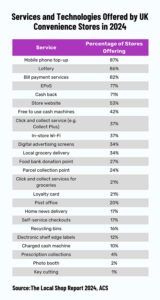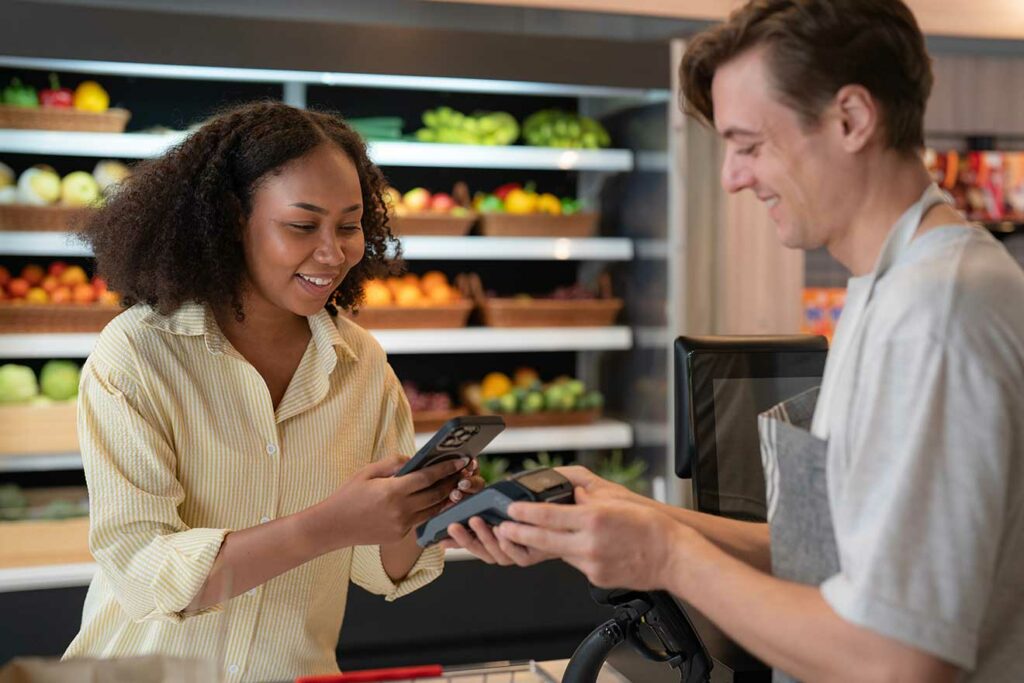Looking to buy a convenience store? We’ve got some good news for you: the convenience store sector is set for significant growth in 2024/25, driven by higher consumer confidence and increased household spending power.
Several other trends are helping to supercharge this growth, from the rising popularity of value-added services, and the shift towards more frequent, smaller shopping trips through to the adoption of hyper-local home delivery services.
Additionally, the increasing use of automation and tech are transforming the way convenience stores operate and meet customer needs.
Higher consumer confidence and household spending power is powering convenience stores’ growth
The UK convenience market expanded by 5% in 2023, reaching £47.4 billion, with a forecasted growth of 4.2% for 2024, according to Lumina Intelligence.
Last year’s increase was attributed to the rising demand for convenience food-to-go, while this year’s growth is expected to be driven by stronger consumer confidence and improved household spending power.
Enhanced store offerings, including expanded meal deals, hot counters, and strategic brand partnerships, are also playing a crucial role in supporting this growth.
Value-added services and technologies are gaining popularity in local convenience stores
According to the ACS, lottery tickets and mobile phone top-ups are the most common “value-added” services, with more than 86% of convenience stores offering them.
Lately, we’re also seeing new services becoming more widespread, like click-and-collect (37%), parcel pick-up points (24%), and even prescription collections (4%).
Key customer experience tech being deployed include EPoS (77%), free-to-use cash machines (42%), and in-store WiFi (37%).
Allowing customers to avoid queues (and human contact) has been another key area for investment for convenience stores: more than one in six (17%) now has a self-service till, up from just 3% in 2019.

Hyper local home-delivery services are growing
The ONS reports that online food sales shot up by 79.3% in 2020 as supermarkets ramped up their online platforms and home delivery services to keep up with the pandemic-driven demand.
This rise in competition from the large supermarkets has pushed convenience stores to step up their game too, with many introducing click-and-collect services and teaming up with companies like Getir and Uber Eats for hyper-local grocery deliveries.
According to the ACS’ 2024 Local Shop Report, almost half of independent retailers (47%) now offer some form of home delivery/click-and-collect service.
“Little, local and often” shopping trends are supporting convenience store sales
According to the ACS, the average basket size at convenience stores is only 2.8 items, with shoppers spending about £7.75 per visit, highlighting the shift towards more frequent, smaller shopping trips.
This “little, local, and often” trend seems to be driven partly by customers managing cash flow, allowing them to buy small amounts of fresh produce without shelling out on a break-the-bank £120 Tesco shop. Additionally, it helps reduce food waste.
Automation is expected to reduce wage costs and reliance on staff members
In mid-2023, the “world’s first” fully automated click & collect convenience store opened its doors in a Manchester apartment block.
The In:Five store at The Filaments in Salford uses locker doors for customers to collect groceries ordered via app. Behind the lockers, robotic arms pick items from shelves. The store stocks around 1,500 SKUs, including ambient, chilled, and fresh produce.
While your average local convenience store isn’t likely to look like this any time soon, automation is on the rise. This may look like more self-checkout systems, mobile apps for ordering and payment, and electronic shelf labels that automatically update prices.


